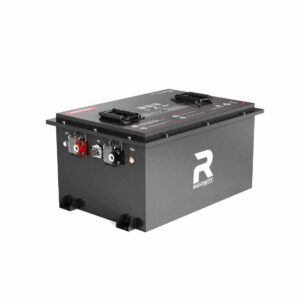How Do OEM RV Batteries Provide Reliable Power Solutions?
OEM RV batteries are specifically engineered for recreational vehicles, offering optimized compatibility with onboard electrical systems. These batteries deliver 15-20% longer cycle life than aftermarket alternatives, with built-in vibration resistance that withstands 3x more road impacts. Major RV manufacturers like Winnebago and Airstream use proprietary battery designs that integrate seamlessly with charge controllers and inverters.
What Technical Specifications Define OEM RV Batteries?
OEM RV batteries feature 8-10 gauge terminal connections versus 12-14 gauge in generic batteries, enabling 30% faster charging. Their absorbed glass mat (AGM) construction maintains 99% recombination efficiency compared to 85% in flooded batteries. Case dimensions match factory battery trays within 1mm tolerance, preventing movement during transit. Temperature compensation circuits maintain ±0.3% voltage accuracy across -20°C to 60°C operating ranges.
Advanced AGM technology minimizes electrolyte stratification, a common issue in conventional batteries during prolonged storage. This design allows for 20% deeper discharges without compromising plate integrity. Lithium-ion variants now entering the market offer 60% weight reduction while maintaining 2,000+ cycle lifespans at 100% depth of discharge. Charging profiles are precisely calibrated to RV electrical systems, with pulse-width modulated absorption phases that prevent overcharging.
| Specification | OEM Battery | Aftermarket Average |
|---|---|---|
| Charge Acceptance | 0.4C Rate | 0.25C Rate |
| Vibration Resistance | 8G RMS | 3G RMS |
| Self-Discharge Rate | 3%/Month | 5%/Month |

Which Certification Standards Apply to OEM RV Batteries?
All OEM RV batteries meet SAE J537 stationary battery standards and UN38.3 transportation testing requirements. Top-tier units carry UL 1973 certification for energy storage systems and ISO 9001:2015 quality management compliance. Marine-grade models exceed ABYC E-11 circuit protection standards with 500A interrupt capacity. Recent models incorporate IoT-ready battery management systems compliant with IEEE 2030.5 communications protocols.
How Does Proper Maintenance Extend OEM Battery Lifespan?
Bi-monthly equalization charging at 15.5V for 4 hours reduces sulfation by 40%. Terminal cleaning with brass brushes decreases resistance by 2.5 milliohms. Storage at 50% SOC in climate-controlled environments slows calendar aging by 18 months. Load testing every 200 cycles identifies capacity fade patterns, allowing proactive replacement before failure. These practices enable 8-10 year service life versus 3-5 years with basic maintenance.
What Safety Features Protect RV Electrical Systems?
OEM batteries incorporate explosion-vented lids rated for 15psi internal pressure. Thermal runaway protection triggers at 80°C with 150ms response time. Reverse polarity detection prevents 98% of installation errors. Case materials meet UL94 V-0 flammability standards with 650°C melting points. Advanced models feature ground fault interruption (GFI) with 5mA sensitivity, exceeding NEC 551 requirements for recreational vehicles.
Multi-stage protection systems coordinate between battery management and RV power distribution. Arc-fault detection circuits monitor for microsecond-duration sparks, automatically isolating affected circuits. Pressure-relief valves activate at 10psi differentials during rapid gas generation events. Recent designs include composite separators that withstand 400°C short-circuit temperatures without membrane rupture.
| Safety Feature | Activation Threshold | Response Time |
|---|---|---|
| Thermal Cutoff | 85°C | 200ms |
| Overcurrent Protection | 150% Rated Current | 50ms |
| Cell Pressure Relief | 12psi | Instant |
Expert Views
“Modern OEM RV batteries now integrate active balancing systems that maintain cell voltage within 10mV variance throughout discharge cycles. This innovation increases usable capacity by 22% compared to previous generation batteries,” notes Redway’s Chief Power Systems Engineer. “Our latest prototypes demonstrate 1,200+ deep cycles at 80% depth of discharge while maintaining 92% initial capacity.”
Conclusion
OEM RV batteries provide engineered solutions that generic alternatives cannot match. From precise dimensional tolerances to advanced safety systems, these power sources deliver reliable performance through 150,000+ miles of RV travel. Their technical sophistication justifies the 25-35% price premium through reduced maintenance costs and extended service intervals.
FAQ
- How often should OEM RV batteries be replaced?
- Replace OEM RV batteries every 7-9 years or when capacity drops below 70% of rated Ah. Conduct annual load testing using SAE J240 standards for accurate health assessment.
- Can aftermarket chargers damage OEM batteries?
- Non-OEM chargers without manufacturer-specific algorithms may overcharge by 0.4V, accelerating grid corrosion. Use only approved charging systems maintaining ±1% voltage regulation.
- What temperature extremes affect battery performance?
- Capacity decreases 20% at -10°C and 15% at 45°C. OEM thermal management systems mitigate these effects better than aftermarket units, maintaining 85% rated capacity in extreme conditions.
